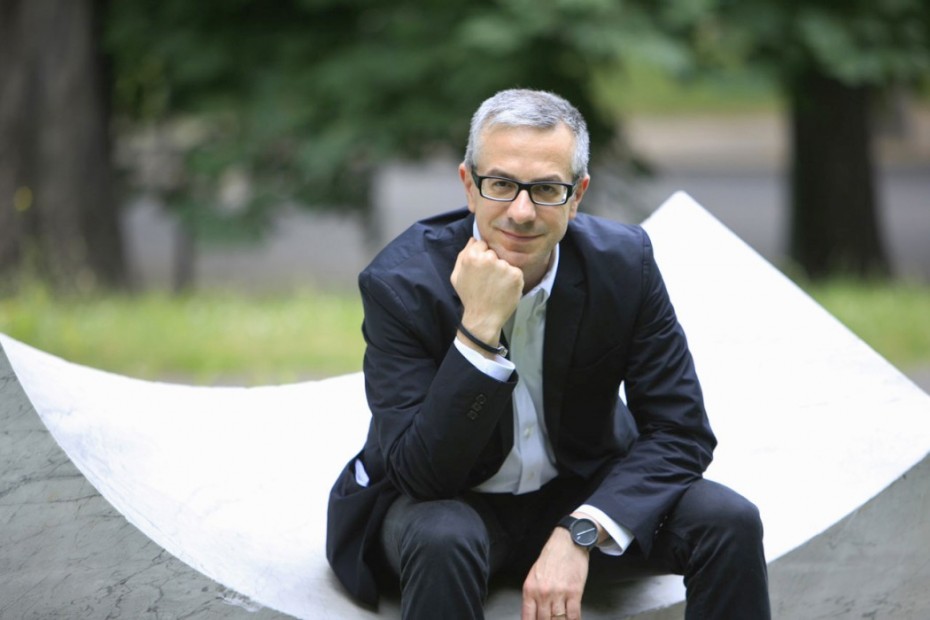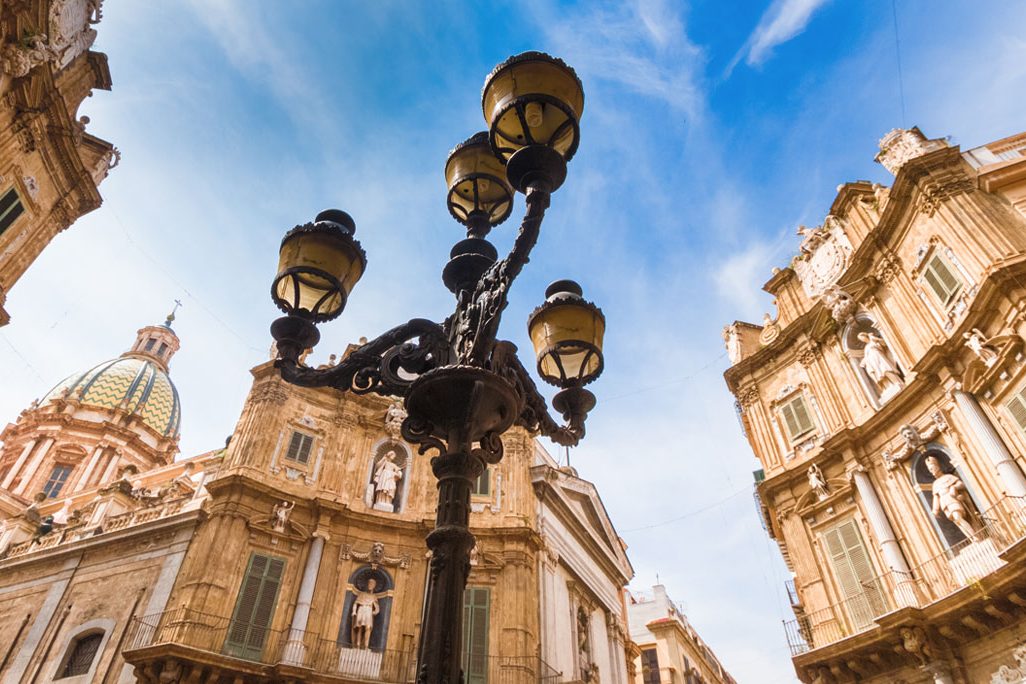Founded in 1895, La Biennale di Venezia is the oldest and most widely recognized contemporary art event in the world. While the Biennale’s roots are in the visual arts, its scope now encompasses theatre music, dance, film and architecture.
The fascinating location of Venice adds to the Biennale’s allure. The exhibits fill the historical Giardini di Castello, the epicenter of the Biennale with their beautiful national pavillions, some of which were designed by important architects such as Carlo Scarpa (Venezuela), Alvar Alto (Finland) and the celebrated studio BBPR of Milan.
In the past three decades The Biennale has grown to include the ancient Venetian shipyard buildings known as the Arsenale, some of them designed by Sansovino. In addition, more than a hundred off-site venues are scattered throughout the historic city.
The Venice Biennale of Architecture has consistently fit into the history of architecture for the past thirty-four years, since 1980, when Paolo Portoghesi, at that time President of the Venice Biennale, had a daring, winning idea: he conceived and organized the first international architecture exhibition, The Presence of the Past, which marked the culmination of the PostModern Movement and travelled also to this side of the Atlantic, to San Francisco, where it was shown at Fort Mason with epochal success.
After that, a number of international stars offered their approaches to architecture at the Venice Biennale, from Hans Hollein to Massimiliano Fuksas, from Aldo Rossi to David Chipperfield. This year the seventy-year-old Dutch architect Rem Koolhaas has transferred his attention from architects to architecture itself, by addressing the complete inventory of the architecture of our time. He called the Fourteenth International Architecture Exhibition Fundamentals: the past, the present, the future, and subdivided it in three major components: Absorbing Modernity, Elements of Architecture, and Monditalia.
Before accepting such a demanding task, Koolhaas set two conditions: one was that he be given more time to prepare himself than the usual nine months allowed a director; and the second was to be given total freedom in exploring architecture’s current impasse. In his vision, the curator’s role and task go beyond those of merely inviting other architects to speak about themselves, their work, and their thinking, as has been the pattern in the past. This time the exhibition is the result of a complex and thorough research conducted under his guidance. There are some historic precedents to this, in some of the early Biennales, but nothing comparable.
The Biennale has for years stressed the gap between architecture and civil society as well the danger of conformity favoured by economy and technology. Indifference and conformity can lead to passiveness and even extinguish the desire for art and architecture, which should instead be nourished and kept alive. With great courage and ambition, Koolhaas has reviewed the history of modernity in the past hundred years and offered a new perspective on those elements that should constitute the points of reference for a regenerated and topical relationship among ourselves, our civilization, and architecture.
As President Paolo Baratta underlined, with the formula adopted this year, the aspiration of proposing one’s own history and participating in modern society as well, becomes one of “imparting new energy to the pluralism typical of the Biennale.” Perhaps for this reason, too, the number of participating countries has risen from fifty-five to sixty-five.
In Absorbing Modernity all the countries involved share one central theme: the history of their modernization from 1914 to 2014. Together they present (at the Giardini, at the Arsenale, and in many other locations) a terrifying vision of the twentieth century in which practically almost every country was destroyed, divided, occupied, and yet survived.
With respect to Elements of Architecture, he himself curated the central exhibition at the Giardini, displaying in fifteen halls the history of fifteen fundamental elements, often overlooked but universally familiar: the floor, the wall, the door, the window, the corridor, the fireplace, the toilet, the stair, the escalator, the elevator, the ceiling, the roof, the facade, the balcony, the ramp. By focusing on the history and evolution of each element, architecture is revealed as a conglomeration of elements, ancient and current at the same time. The fireplace for instance, once the focal point of the house, important for heating, cooking and as a central gathering place, nowadays presents more an aesthetical and emotional component.
What surprises is the abundance of different materials assembled by Koolhaas, his curators and students of design from Harvard University and from Office for Metropolitan Architecture (OMA), Rotterdam. Several questions arise while we go from room to room: How do we build today? Is architecture mere technology? Are these fundamental elements determined only by industry? How did we get to this point? Where do we go from here?
Koolhaas in several interviews has clearly expressed his message, i.e., the moral purpose of architecture: comfort, security, and sustainability. The cultural, historical and political significance of architecture has never been explored at such a high level and as much as it is today.
With respect to Monditalia at the Corderie, Koolhaas invited all other sectors of the Biennale — Cinema, Dance, Theatre, and Music — to participate in a thorough survey of Italy using the Arsenale as a stage or performing space with all presentations centred on one single theme: the current state of Italy, as emblematic of a global situation.
The journey from the South to the North of Italy is underlined by the enormous Tabula Peutingriana, a fifth-century map of the Roman Empire, still relevant today, juxtaposed on the screenings of eighty-two Italian films and videos (including “Viaggio in Italia” by Roberto Rossellini), serving as backdrop for forty-one architectural case studies developed in collaboration with many young research groups, geographically situated from Sicily to the Alps. Cinema and Architecture together offer an overall fresco illustrating the history, religion, politics, architecture, technology, economics, industry, and media of Italy in all its complexity, presented as a paradigm of local and global conditions.
In particular the Padiglione Italia, curated by Cino Zucchi, shows how our country has absorbed modernity by grafting. Milan is the city chosen to exemplify and explain the complex architectonic process proceeding in layers after the Second World War. This implies reflection on the use of the immense area now under construction for Expo, once the universal Exhibition is concluded: for example, several uses are proposed, among which is the notion of transforming it into a large churchyard, respecting diverse cultures and religious traditions — an idea that would make us forget about all the mismanagement and corruption scandals that have recently emerged.
Koolhaas gave each of the pavilions only one theme to explore and analyze: Absorbing Modernity 1914-2014 therefore explores its national and international identity. In addition to Europe and North America, it also includes Central and South America and the former Communist countries, as well as Asia, Africa, New Zealand, and the Arab countries.
How do we relate to the specific traditions of modernity? Only after having analyzed one hundred years of architecture and the history of elements we have built with can we speculate on the architecture of the future. The 2014 Biennale is both an encyclopaedic presentation of the architectural achievements of the twentieth century and an open workshop. It tells us who we are and where we came from but does not provide the answer as to where we are heading. It will be up to each of us to decide which route to take.
The Fourteenth Venice International Exhibition of Architecture, is directed and curated by Rem Koolhaas, and sponsored, among others, by Rolex, Japan International Tobacco, and Foscarin. It may be viewed until Sunday, November 23, 2014.





























